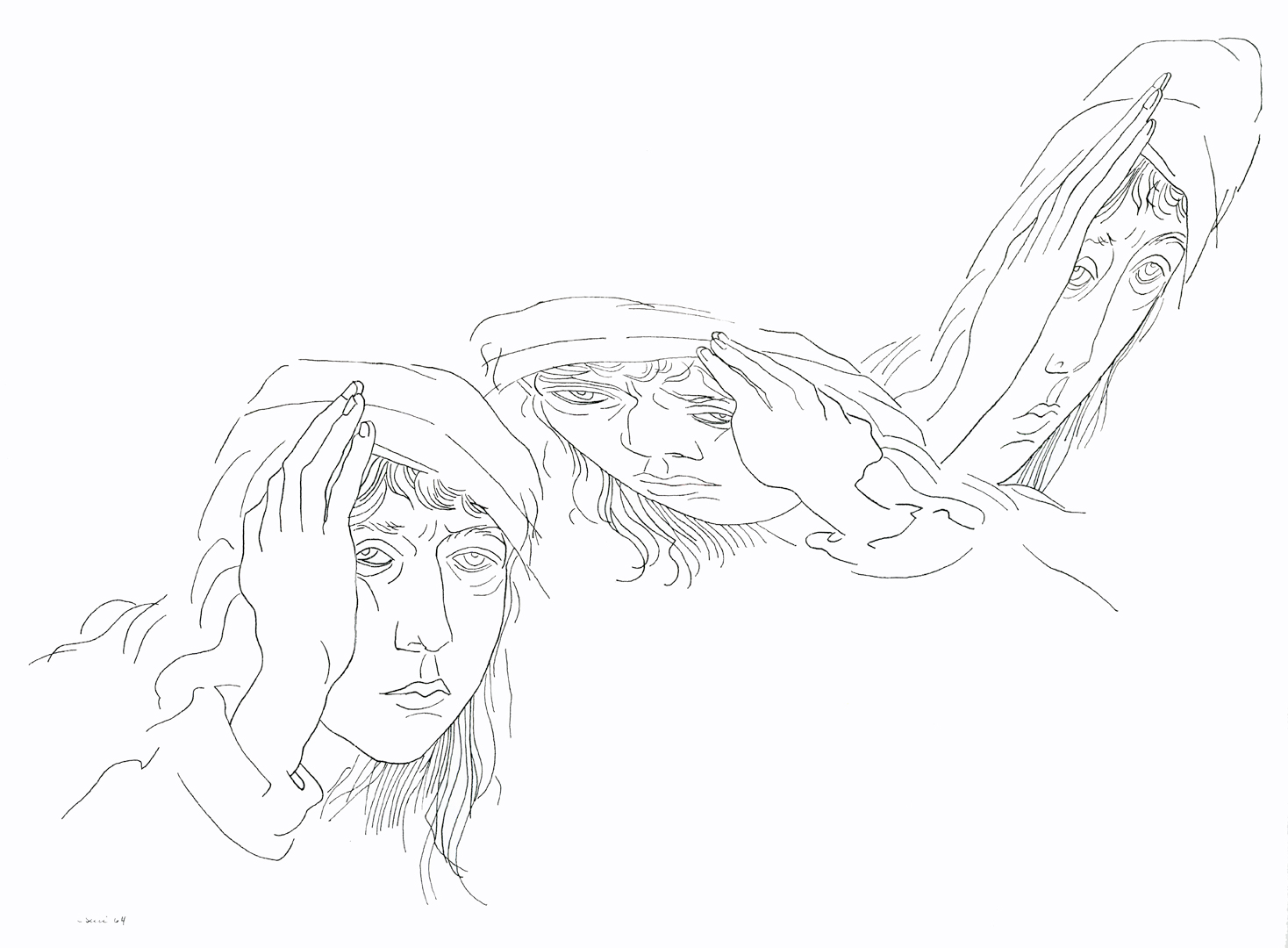Charles A. Csuri: After Albrecht Dürer
Artist(s):
Title:
- After Albrecht Dürer
Exhibition:
Creation Year:
- 1964
Medium:
- Ink on paper, analogue computer
Size:
- 61 x 81 cm (24 x 32 in)
Category:
Artist Statement:
After the Artist Series
“This [technology] allowed me to systematically alter the original geometry of my drawing. One end of the pantograph device traced the drawing and the other end was simultaneously making transformations. I was intrigued with the idea of using devices and strategies to create art. I questioned the notion there had to be a tactile kinesthetic process to create a drawing or painting.”
— Charles A. Csuri
Over the centuries, many artists have sought to believably translate our three-dimensional world onto a two-dimensional surface. Csuri, like his early contemporaries who also worked as painters, defies a concern for strict realism and instead embraces the two-dimensional surface, challenging its limitations in his earliest endeavors with computer art. There were no mass-produced operating systems when Csuri began creating art in the early 1960s, necessitating that he create his own computer programs to challenge the limits of this new technology. Further, computers at this time were unable to assign values to account for mass, although the perception of spaces and their relatedness to mass will become a hallmark of Csuri’s art created in a three-dimensional world space.
In his After the Artist series, the first analogue computer art created by Charles Csuri from 1963 to 1964, Csuri recalls and recreates classic works by historically significant and personally compelling artists. In all, he created nine analogue drawings, referencing works by Paul Cézanne, André Derain, and Albrecht Dürer, among others. In this series, Csuri creatively distills selected masterpieces into their vital components, thus placing the works by these artists into a new role he has assigned to them.
Then, using his analogue process, Csuri masterfully repeats, stretches, skews, and inverts the elements. These works translate traditional art by harnessing a vehicle originally created for the scientific applications. The result is a new artistic paradigm, in which Csuri appropriates scientific elements and injects unpredictability, dynamism and controlled artistic chaos. By stripping the works of Cézanne, Derain and Dürer of their z-axis, Csuri removes that aspect which confers depth and volume, working instead with “relationships between objects as transformations involving position, rotation and scale.” These ‘transformations’ result from the distillation of well-known works into their simplified forms, and their subsequent manipulation results in tension between dimensions.
Albrecht Dürer (1471–1528), the patriarch of portraitists, dominated Germany in the late fifteenth century. Prior to him, artists generally did not paint independent self-portraits, which expressed the personality behind the canvas’s production. In After Albrecht Dürer, Csuri recalls Dürer’s Self-Portrait with a Bandage of 1491–92, a pen on paper sketch in which Dürer emphasizes the agency of his own hand. Csuri eliminates references to depth and space by removing shading, reducing Dürer’s sketch to its most basic elements. The adjacent pantograph is flipped and slightly compressed as Csuri considers it from another perspective. He returns to the original orientation for the final replication, skewing the drawing along both its x and y axes, further emphasizing the presence of Dürer’s hand and, by extension, reminding the viewer of the latent capabilities within it.





